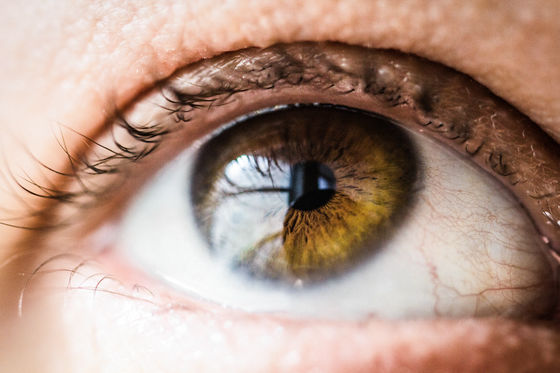Light for dry eyes, where it is difficult to develop therapeutic drugs with the appearance of blinking artificial eyes

by
People who are staring at a computer monitor for more than 8 hours a day may get tired or dry. When these symptoms become severe, it becomes a disease called ' dry eye '. It seems that there are surprisingly few choices for this dry eye drug because it is difficult to model the complex pathophysiology of the human eye. However, the newly-developed eye biofunctional chip from the University of Pennsylvania research team can simulate human blinks, testing experimental drugs for dry eye while minimizing risk and ethical concerns Can be used for
Multiscale reverse engineering of the human ocular surface | Nature Medicine
http://dx.doi.org/10.1038/s41591-019-0531-2
Blinking eye-on-a-chip used for disease modeling and drug testing-ScienceDaily
https://www.sciencedaily.com/releases/2019/08/190805134020.htm
A research led by Dr. Dan Hugh, Associate Professor of the University of Pennsylvania, Department of Biotechnology, and graduate student Jeong Yoon Seo, deepens understanding of dry eye by simulating human blinks and is an experimental drug for treatment It was announced in the scientific journal Nature Medicine that an artificial 'eye' that could be used for testing was created.
Associate Professor Fu's laboratory specializes in organ-on-a-chip (biological function chip) creation, and in May 2019, the lung and bone marrow biofunction chip was used to study astronaut diseases. Has a track record of developing
The “eye biofunction chip” has been studied in the laboratory for many years. The reason why we developed a biofunctional chip for the eye that can be used for dry eye research is that dry eye treatments have been effective since 2010, despite the fact that dry eye affects about 14% of the world population. This is because 200 clinical trials have failed, and it is difficult to develop a new treatment as there are only two types of treatments approved by the US Food and Drug Administration .

by
The research focused on the design of a model that can imitate 'healthy eyes' and 'dry eye eyes', and the goal was to be able to test experimental drugs without harming the human body. To develop a biochip for the eye, Associate Professor Fu and colleagues used a 3D printer to create a porous scaffold shaped like a 10-cent coin-sized contact lens, where human eye cells were cultured. Corneal cells grow inside the circle and stain yellow, and conjunctival cells, a special tissue that covers the white part of the human eye, grow in a red circle. A layer made of gelatin was placed on it, and this was made to function as a human eyelid. By supplying artificial tears from the lacrimal duct stained in blue, a tear film is formed and the human eye is faithfully reproduced.
Associate Professor Fu said about the artificial eye developed by the team: “From an engineering point of view, it was interesting to think about the possibility of imitating the dynamic environment of the blinking human eye. It produces a thin film to moisturize the surface of the eye, which was an important feature on the surface of the eye that we wanted to reproduce on the device, ”he said. . In addition, it seems that inflammation and irritation occur in dry eye patients because they evaporate faster than the eye tear film is replenished.
“At first, we thought it was as easy as keeping the eye cell culture environment dry, but,” Associate Professor Fu said. `` In fact, we found that dry eye is an incredibly complex ta-factorial disease with various subtypes, '' he said, developing a biofunctional chip for the eye that mimics `` dry eye eyes. '' Talking about the difficulty of that.
It has also been discovered that there are two core mechanisms for the generation and progression of dry eye. One reason is that when water evaporates from the tear film, the salinity of the surface of the eye increases dramatically, resulting in high osmotic pressure. Second, the high osmotic pressure causes the tear film to thin more rapidly and often rupture. The problem is whether or not the instability of the tear film can be modeled, but the research team has also succeeded in creating a model that faithfully reproduces the eyes of dry eyes.

by Vanessa Bumbeers
It is verified from multiple perspectives that the artificial eyes developed by the research team through multiple clinical measurements work like human eyes, and the salinity of the tear film and the time it takes for the tear film to rupture An artificial eye that can measure and imitate the human eye perfectly has been completed. In addition, the research team uses the developed eye biofunctional chip for testing dry eye treatments in clinical trials, and correctly measures the effect of treatments using healthy and dry eye eyes. Especially successful.
“We just cleared the proof of concept, but I hope that the platform of the eye biofunction chip will evolve and be used for purposes other than contact lenses, eye testing, and drug screening. '
Related Posts:
in Science, Posted by logu_ii







